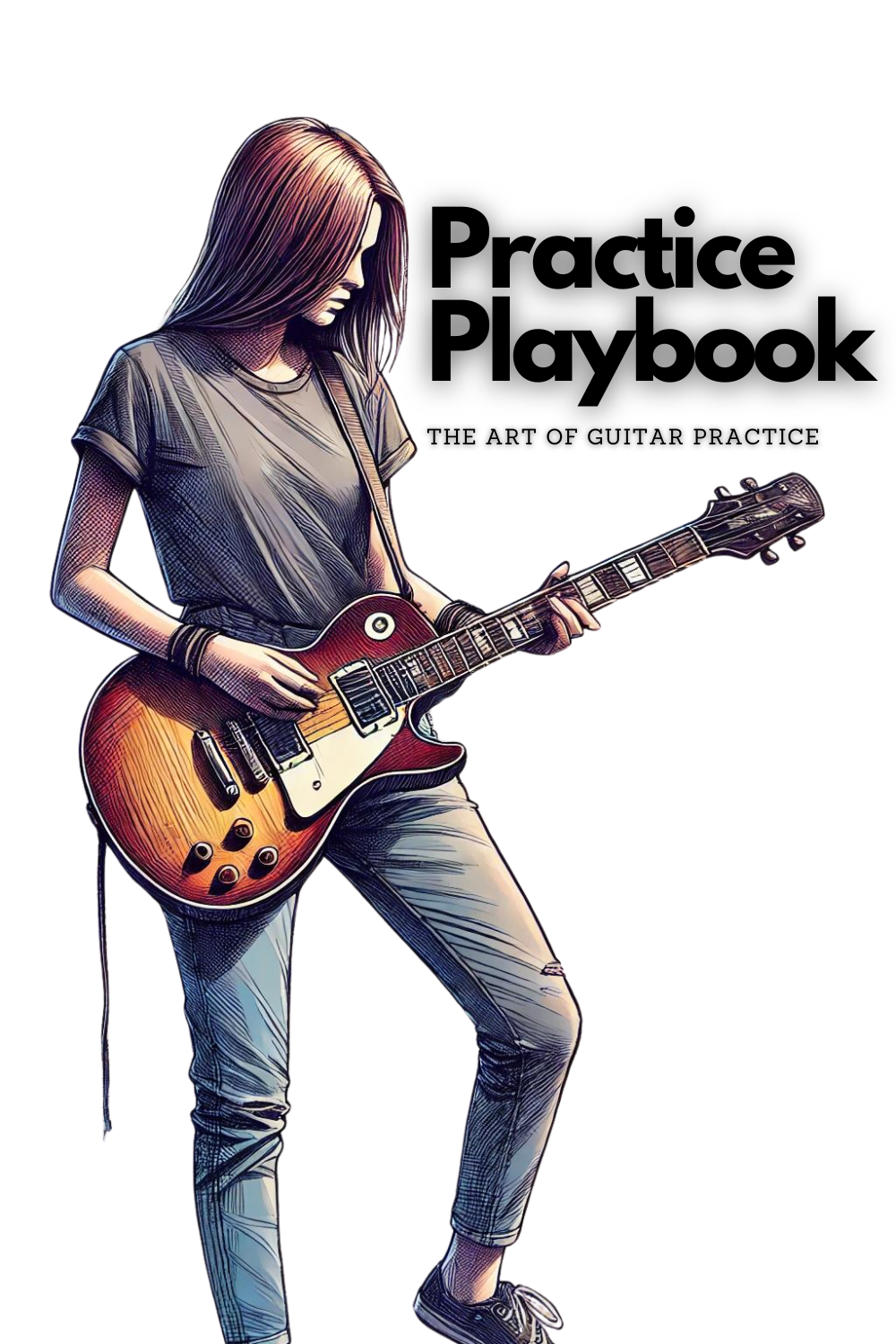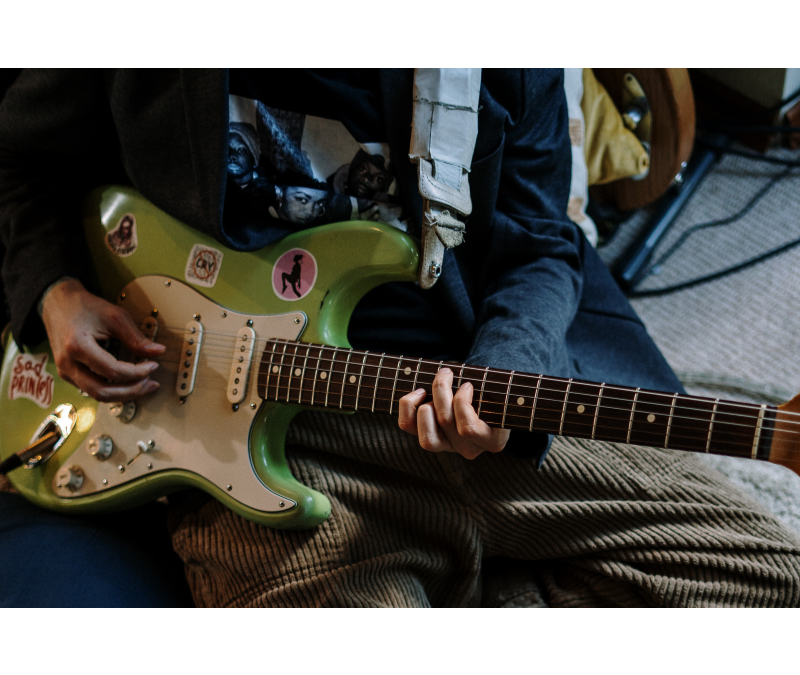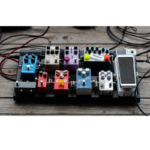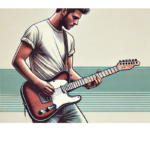Stevie Ray Vaughan was a blues icon who gave us some of the most powerful and emotional guitar solos of all time. His best solos showcase his incredible technique, dynamic touch, and distinctive Texas blues tone. In this post, we’ll break down Stevie Ray Vaughan’s best solos and share tone tips for each one, so you can get as close as possible to that unmistakable SRV sound.

Download the the Practice Playbook!
Practice Playbook is a powerful guide designed to take your guitar practice sessions to the next level. Whether you’re just starting out or looking to sharpen your skills, this playbook gives you everything you need to practice smarter, not harder. With 20 unique guitar practice prompts, 10 highly effective practice methods, and 10 expertly designed practice routines, you’ll have a structured path to real progress.
Download Now
1. “Texas Flood”
- Why It’s One of Stevie Ray Vaughan’s Best Solos: SRV’s solo on “Texas Flood” is all about raw blues expression. The solo highlights his deep bends, smooth phrasing, and his mastery of dynamics.
- Tone Tips: To match his “Texas Flood” tone, go for a classic Fender Stratocaster setup, ideally with heavy-gauge strings (SRV often used .013s!). Use a clean amp with a bit of natural breakup, like a Fender Vibroverb. To nail SRV’s sound, set your bass high, with mids and treble adjusted for clarity. Add a Tube Screamer with low gain and high level to boost sustain without too much grit.
2. “Pride and Joy”
- Why It’s One of Stevie Ray Vaughan’s Best Solos: “Pride and Joy” is SRV’s signature tune and a master class in his “Texas Shuffle” rhythm. The solo is full of life, with a bouncy, energetic feel.
- Tone Tips: For “Pride and Joy,” SRV leaned on his Strat’s bright, punchy tone, enhanced with a Tube Screamer. Go for a clean amp sound with high mids to help your tone cut through the mix. If you have single-coil pickups, they’ll add the sharp edge that defines SRV’s sound. Dial in the treble, and slightly roll off your guitar’s tone knob to keep things from sounding too harsh.
3. “Lenny”
- Why It’s One of Stevie Ray Vaughan’s Best Solos: “Lenny” is a soft, soulful piece dedicated to SRV’s wife. This solo shows his expressive side, with slow bends and carefully chosen notes.
- Tone Tips: To match “Lenny,” set your amp to a clean, bright tone, with a touch of reverb for depth. Add a slow chorus effect if possible. Keep the bass lower and set the mids around noon, with the treble dialed up for clarity. Use the tremolo arm lightly to add a shimmer to each note, giving it that smooth, floating quality.
4. “Scuttle Buttin’”
- Why It’s One of Stevie Ray Vaughan’s Best Solos: “Scuttle Buttin’” is a high-energy Texas blues track that demands speed and precision. SRV’s solo here is all about speed, attack, and aggression.
- Tone Tips: For “Scuttle Buttin’,” you need a bright, cutting tone with a bit of grit. Use your Strat’s bridge pickup for added brightness. A Tube Screamer with low gain and high level will add punch without too much drive. Keep your amp’s bass low, mids high, and treble just below max to replicate SRV’s sharp tone.
5. “Voodoo Child (Slight Return)”
- Why It’s One of Stevie Ray Vaughan’s Best Solos: SRV’s take on Hendrix’s classic is powerful and soulful, packed with energy. His version is an epic tribute to his hero.
- Tone Tips: For “Voodoo Child,” you’ll want a saturated tone. Use a mid-heavy amp setting, and pair it with a Tube Screamer or similar overdrive. Add a wah pedal to emphasize certain notes and achieve that expressive, vocal-like quality. Play with the neck pickup to get a thicker, warmer sound, which is ideal for SRV’s fierce bends and slides in this solo.
6. “Little Wing”
- Why It’s One of Stevie Ray Vaughan’s Best Solos: SRV’s instrumental cover of “Little Wing” is heartfelt and delicate. He uses a range of techniques, including double stops, bends, and slides, to honor Hendrix’s work.
- Tone Tips: For “Little Wing,” set your amp to a clean, warm tone with reverb and a bit of chorus. Use a Fender-style amp with bass slightly reduced, mids at noon, and treble set to give a clear tone. A Tube Screamer can add subtle sustain—keep the gain low and the level up. SRV’s warm, round tone in this solo comes from using the neck pickup on his Strat.
7. “Cold Shot”
- Why It’s One of Stevie Ray Vaughan’s Best Solos: “Cold Shot” has a laid-back, confident groove, with SRV’s solo adding soul and swagger to the song’s bluesy feel.
- Tone Tips: To replicate the “Cold Shot” tone, go for a slightly overdriven sound with mid-heavy amp settings. Use a touch of chorus or vibrato to get that slight wobble in the tone. The Tube Screamer should add thickness without overpowering the clean signal, so keep the gain low. For the amp, try a higher mid setting with moderate bass and treble.
8. “The Sky Is Crying”
- Why It’s One of Stevie Ray Vaughan’s Best Solos: SRV’s cover of this blues standard is packed with emotion. His solo here is slow, yet powerful, with perfect bends and dynamic phrasing.
- Tone Tips: To get close to the “The Sky Is Crying” tone, set up your amp for a warm, thick sound. A Tube Screamer with low gain but high level will add richness. Adjust your amp’s bass and mids high, with treble set lower for a darker tone. Add a touch of reverb to fill out each note. Using the neck pickup will give you a deeper, rounder tone for this slow, emotional solo.
Final Thoughts on Stevie Ray Vaughan’s Best Solos
Each of Stevie Ray Vaughan’s best solos is an unforgettable piece of blues guitar. His tone was a unique mix of heavy-gauge strings, careful amp settings, and the way he used his Stratocaster with incredible finesse. While it’s hard to match SRV’s exact sound, experimenting with similar settings and techniques can bring you close.
If you’re passionate about learning SRV’s style and connecting with other blues guitar fans, join us in the Guitar Freaks Hangout on Discord! We share SRV tips, tone tricks, and help each other improve our playing.

Download the the Practice Playbook!
Practice Playbook is a powerful guide designed to take your guitar practice sessions to the next level. Whether you’re just starting out or looking to sharpen your skills, this playbook gives you everything you need to practice smarter, not harder. With 20 unique guitar practice prompts, 10 highly effective practice methods, and 10 expertly designed practice routines, you’ll have a structured path to real progress.
Download Now










